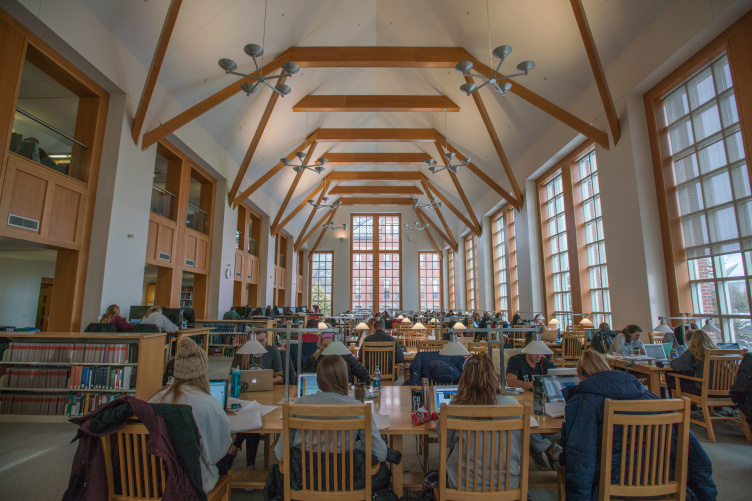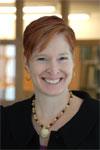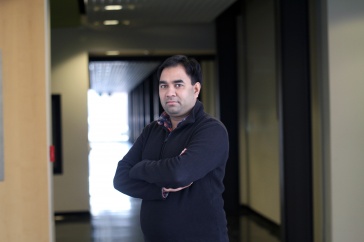
Dimond Library at UNH (Photo: Jeremy Gasowski, Communications and Public Affairs)
There was a time in the not-so-distant past when news was available on television at 6 a.m., noon and 6 p.m. or via newspaper morning and night.
Compared with the at-your-fingers, immediately available and regularly updated reports we have today, that limited access to information might seem almost medieval. However, this age of social media and innumerable websites has brought with it a danger all its own: the preponderance of access to information has made it more difficult to discern legitimate sources from “fake news” — articles, features and even “in-depth reports” based on skewed facts or complete fiction.
For citizens wanting to stay informed and university students conducting research, that poses a big problem.
Enter UNH’s Kathrine Aydelott, assistant professor and instruction librarian at Dimond Library, who has compiled an online resource to help distinguish factual reporting from fake news.

“There’s such a need right now for recognizing that much of what passes as solid information is, in fact, made up or taken out of context,” she explains. “Although there are lots of similar guides out there, we in the library wanted something that would have our UNH name on it and linked to our resources.”
Under the “Help! My News is Fake!” header, Aydelott includes several linked questions: “Did your mother call you to tell you that liberals hate science? Did your Facebook feed pop up with an article on a new pesticide that's going to kill us all? Did one of your friends breathlessly tell you that President Trump was going to pardon mass shooter Dylann Roof? You might have heard any or all of these stories, but there's one thread connecting all of them: They’re not true.”
The resource goes on to identify the problem, asking, “Why should you care about whether your news is real or fake?” — with reasons ranging from “you deserve the truth” to the damages of fake news and benefits of real news — and specifies exactly what makes a story fake. Much of the guide is licensed through Creative Commons, making it available for others to reuse to get the word out about fake news, Aydelott adds.
And the reactions so far?
“We had a great social media response when we announced the guide, and it’s been one of the top resources linked through Google, so that’s certainly gratifying,” Aydelott says.
Gathering trustworthy reports in this information age can be very challenging for anyone, Aydelott says, making resources like this important.
“The traditional ways of producing information: publishing with editors in books and journals, and journalists publishing in newspapers, is much slower than the faster ways of sharing information using social media, video and other web-based forms that we’re now coming to expect,” she explains. “Recognizing how easy it is to both publish and manipulate information should be a cause for great concern. We need to do more to talk about this in classes and create opportunities for students to practice verifying the information they find.”
Want to learn more? Dimond Library is there to help. “Our subject librarians welcome opportunities to talk to faculty and students about information literacy and how to evaluate sources,” Aydelott says.
View the guide, Fake News, Misleading Information and Evaluating Sources.
-
Written By:
Jennifer Saunders | Communications and Public Affairs | jennifer.saunders@unh.edu | 603-862-3585

















































